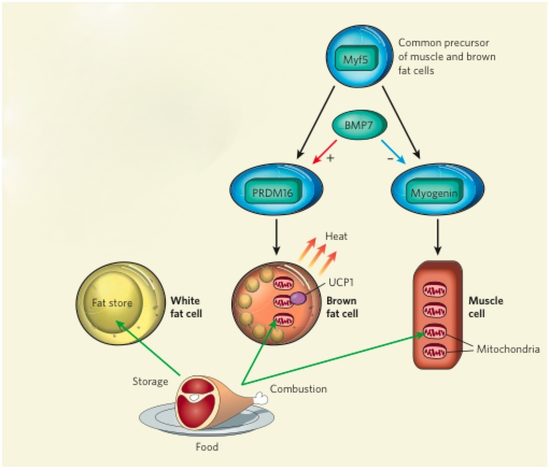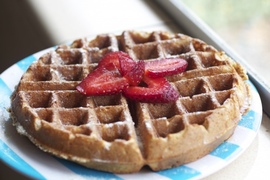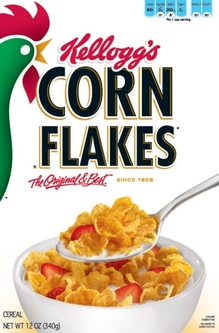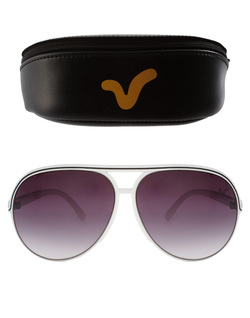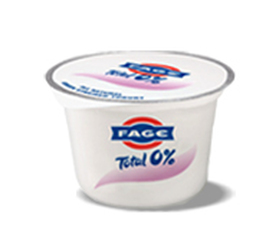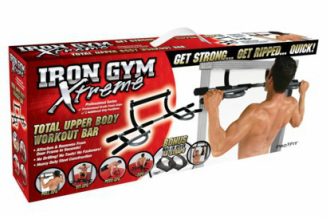Flexbility 101 for men
Flexibility 101 for women
Brown Fat - A Fat That Can Make You Thin
What is brown fat, and how is it different from “regular” fat? There are two types of fat cells: white fat cells and brown fat cells. White fat is the unwanted fat that we try to shed when we see it in excess. While it is the undesirable fat that makes our jeans from last year too difficult to put on, it does play important roles in our bodies. It is a metabolic organ that stores energy, cushions and protects our organs, acts as a thermal insulator, and contains important hormone receptors and enzymatic machinery, etc. Brown fat, on the other hand, dissipates chemical energy from fatty acids and sugars into heat. Yes, you understood correctly -- while white fat stores energy, brown fat burns energy!!!
What makes brown fat, brown? Brown fat gets its colour because it is unusually rich in mitochondria. Most mitochondria generate energy from the food we eat. We have lots of them in our muscles. Said that, mitochondria in brown fat differ from those in muscle cells. This is because muscle cell mitochondria break up organic molecules from the food we eat through a process of coupling reactions that convert it to ATP -- our bodies’ fuel. Brown fat mitochondria are uncoupled from ATP production through the action of a specific uncoupling protein called UCP1. UCP1 induces proton leak across the inner mitochondrial membrane, generating heat instead of converting it into ATP. In short, brown fat mitochondria “waste” energy by releasing it as heat.
Until recently, it was believed that only rodents, hibernating animals and human infants had brown fat. Babies are born with a small amount of brown fat at the back of their neck and kidneys, which was thought to disappear by the third week after birth. In the past decade, however, scientists have discovered the presence of brown fat in adult humans and an evident relationship between brown fat and energy expenditure. Lean adults have been found to have more genes that express brown fat, while obese patients have little to none. In 2009, several studies exploring the presence, distribution and activity of brown fat in both lean and obese subjects were published. These studies found that brown fat activity increases in cold temperatures and is negatively correlated with BMI and age.
The finding that brown fat activity is present in adult humans is of direct relevance to fighting the obesity epidemic. Molecular studies to understand the precise mechanism of action and genetic expression of brown fat are underway. In the last several years, several models illustrating this have been proposed. Dr. Patrick Seale and Dr. Bruce Spiegalman from Harvard University discovered that brown fat cells originate from pre-differentiated muscle cells. And last year, Dr. Fawaz Haj, professor at University of California, Davis, made an important discovery marking the link between the regulation of insulin signalling and brown fat cells through an enzyme called protein tyrosine phosphatase 1B (PTP1B). Of note, PTP1B is a physiological regulator of glucose homeostasis and adiposity and is a drug target for the treatment of obesity and diabetes.
Understanding the regulation of brown fat expression has brought us one step closer to counteracting obesity and diabetes through genetic therapy or therapeutic drugs that induce brown fat expression. Further research is yet to be done on the possibility of inducing brown fat expression in humans. Long-term studies aimed at observing the lifespan of transplanted or drug-induced brown fat cells need to be performed to see whether inducing brown fat differentiation in adult humans would have long term weight loss effects. In addition, optimal conditions to achieve clinically acceptable and therapeutically positive results from transplantation of engineered brown fat need to be defined. Answers to these unsolved mysteries about brown fat will lead us to novel therapeutic methods to combat obesity. +Mitra Jamshidian for TODOSLifestyle. +September 2012
1. Cannon B., and Nedergaard J. "Developmental biology: Neither fat nor flesh". 2008. Nature. 454: 947-948
2. Cypess, A M. "Identification and Importance of Brown Adipose Tissue in Adult Humans". 2009. The New England Journal of Medicine. 360 (15): 1509.
3. Himms-Hagen, Jean. "Does Brown Adipose Tissue (BAT) Have a Role in the Physiology or Treatment of Human Obesity?" 2001. Reviews in Endocrine & Metabolic Disorders. 2 (4): 395-401.
4. Kajimura S., Seale P., Cooper M.P., Ruas J.L., Chin S., et al. "Regulation of the brown and white fat gene programs through a PRDM16/CtBP transcriptional complex". 2008. Genes and Development. 22 (10): 1397-1409.
5. Krauss S, CY Zhang, and BB Lowell. "The mitochondrial uncoupling-protein homologues". 2005. Nature Reviews. Molecular Cell Biology. 6 (3): 248-61.
6. P Seale, Kajimura S, K Kubota, E Lunsford, JV Frangioni, SP Gygi, and BM Spiegelman. "Initiation of myoblast to brown fat switch by a PRDM16-C/EBP-beta transcriptional complex". 2009. Nature. 460 (7259): 1154-8.
7. Matsuo K, A Bettaieb, N Nagata, I Matsuo, H Keilhack, and FG Haj. "Regulation of brown fat adipogenesis by protein tyrosine phosphatase 1B." 2001. PloS One. 6 (1).
8. Sell H, Y Deshaies, and D Richard. "The brown adipocyte: update on its metabolic role". The International Journal of Biochemistry & Cell Biology. 2004. 36 (11): 2098-104.
9. van Marken Lichtenbelt WD, JW Vanhommerig, NM Smulders, JM Drossaerts, GJ Kemerink, ND Bouvy, P Schrauwen, and GJ Teule. "Cold-activated brown adipose tissue in healthy men". 2009, The New England Journal of Medicine. 360 (15): 1500-8.
Spring Onion To The Rescue!
Today I consume red meat in moderation as it is my primary source of iron. Some of the present iron turn into iron radical species in our cells and can be equally as damaging as any other free radical in our body.
It has consciously been bothering me, the free iron radicals which roam around in my body as result of the red meat I eat and therefore I have been trying to incorporate in my diet nutrients to tackle them. In general we all fit in lots of antioxidants in our daily meals. But, I am looking for a specific one that could scavenge the iron radicals, and reduce the damage they cause to my cells. I hope to have them with my favourite red meat dish, Filet Mignon.
Today, I was observing my chef friend, making a delicious dinner, using spring onion to accompany the juicy chicken that was slowly cooking. That made me think how much I use green onions with meat and made me happy that a top quality chef as my friend is, was doing the same. This further triggered my enthusiasm and I searched to identify the healthiness of spring onions in order to see if besides the inspiring taste, it could possibly be hiding a “health” secret.
Guess what!!!! Not only did I find how uniquely healthy spring onions, but I also found out they turn out to be my solution to iron radicals which pester my body.
Yes, one of the most effective scavengers of free iron radicals in our body is SPRING ONION. Studies show that not only in comparison to vegetables of the same class, spring onion has magnificent antioxidant activity; they have further proved that spring onion has a miraculous scavenger power for iron free species.
I could not have been happier, since I tend to cook most of my meats with spring onions. Have you tried it? I know most people try onions. But spring onions make a great difference to the flavor of cooked meats and salads, in comparison to plain onions. The study also shows that even the leaves have the antioxidant activity, so you can use the whole thing, including the greens. Next time you are about to have a meal think of me and add it. It also adds to the presentation of your meal just buy sprinkling an amount once finished cooking. As they say most of the taste arises from the way we present it. The shape and color of spring onion goes great with meats.
Spring onions and meat happen to taste great together. Many foods that taste good together happen to have complementary health affects, which I will write more about later. Stay Tuned! +Soodeh Nezam for TODOSLifestyle. +July 2012
And the winner is ….Pomegranate Juice!
A smoker's new best friend
After years of research and trialing, finally good news for smokers has broke out. A certain antioxidant that is actually proven to be effective against complications caused by smoking. These are the natural kind of antioxidants, the ones that are found in natural food sources, rather than the synthetic kind, that are bottled up and sold in pharmacies. Amongst all these natural fruits and foods the primary source of antioxidants our little green friend, the kiwi, is proven to be the most and most antioxidant-packed and effective with smokers. The antioxidant dosage is relatively small, therefore, you only need to eat 3 of them a day to get the optimum effect in your body, the very same body you damage with cell by cell with every drag from your cigarette. After learning all the benefits of kiwi, I am even adding it to my diet, even though I am not a smoker. But, I figured 3 kiwi a day is a very fun and cost effective way of getting my antioxidants, instead of taking supplements! I add it to whatever I am eating! From my cereal for breakfast in the morning, to my salad for dinner at night. The fascinating thing about kiwi is its flavor and how it goes well with everything! You can easily add kiwi to your morning smoothies, as the taste of kiwi goes so well with any other fruits, like strawberries or bananas. When you visit your frozen yogurt place, kiwi could be one of the toppings to make your yogurt more delicious and healthy. As you slice apples in the morning and pack it for snacks, add some slices of kiwi to it. Still if you forget any of these, there is always the “Naked” kiwi smoothie you can pick up and have in the lecture. I am still routing to see a fruit in your hand in place of a cigarette, but till then, don’t forget your new best friend, the KIWI!!! This may not affect you directly but it could help out someone you love. +Soodeh Nezam for TODOSLifestyle +May 2012
Whole Wheat or Bust!
Be Coo Coo for Coconuts
Nike+ FuelBand is always on
|
|
Would you exercise more with Nike+ fuelband?
show/hide
|
Start simple and add delicious taste
|
|
What is your favorite cereal?
show/hide
|
5 exercises to implement into your workout
1. Lying Chest Press 2. Dips 3. Burpee to shoulder press 4. Squat Arm Curls 5. Side crunch to burpee.
Make yourself . +January 2012
|
|
Which is your favorite exercise?
show/hide
|
Learn your plate, learn its weight
|
|
What is a healthy plate for you?
show/hide
|
An extremely practical kitchen appliance
|
|
What kitchen appliances are useful to you?
show/hide
|
One rinse, two times the taste
|
|
Do you make sure to wash vegetables?
show/hide
|
Protect yours eyes, look good doing it
|
|
Are your sunglasses fashionable or practical?
show/hide
|
Simplify your soap dispenser
|
|
Do you prefer hand soap or hand sanitizer?
show/hide
|
With yogurt, it turns out plain and simple is the best
|
|
What do you add to Greek yogurt?
show/hide
|
A fun & healthy grocery shopping experience
|
|
What is your favorite item when grocery shopping?
show/hide
|
Protect your hands, lift better
|
|
How do workout gloves help you?
show/hide
|
A pull-up a day goes a long way
|
|
How often do you do pull-ups?
show/hide
|
Now make the best tasting shakes ever
|
|
Have you ever tried to make delicious shakes?
show/hide
Click to set custom HTML
|



